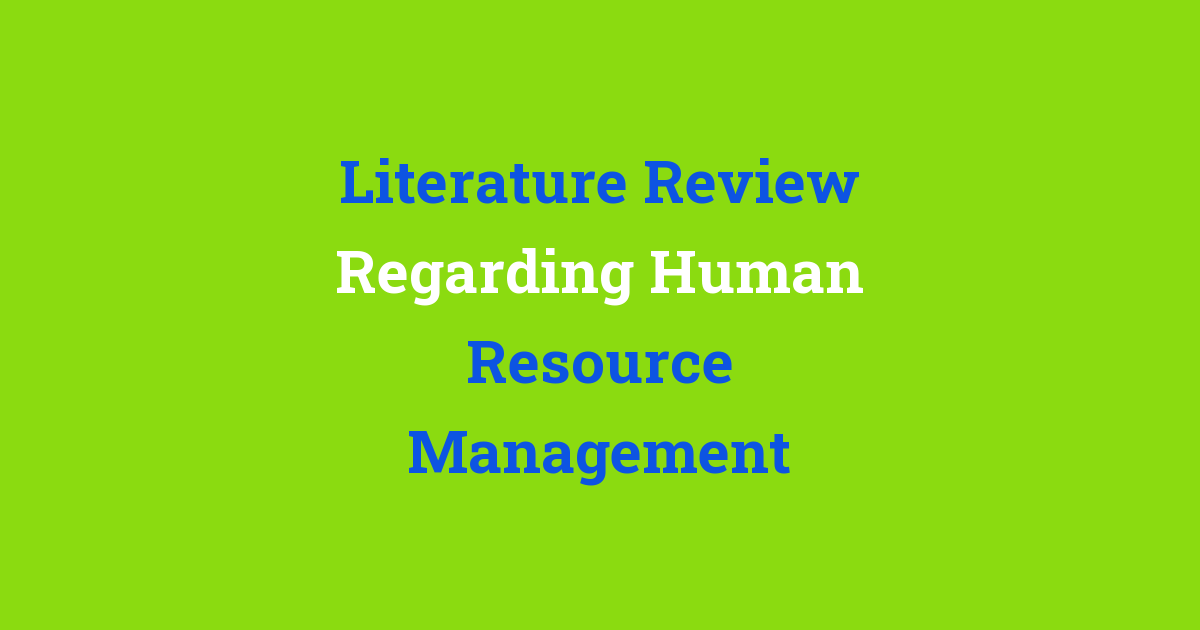A critical examination of the existing literature on human resource management.
Literature Review on Human Resource Management
Introduction
Human Resource Management (HRM) is a crucial aspect of any organization as it involves managing the most important asset – the employees. With the dynamic changes in the business environment, organizations need to adapt their HRM practices to attract, retain, and develop their employees. This literature review aims to analyze the existing HRM practices, identify the problems associated with them, and propose a new system that could address these challenges.
Problem Statement
The traditional HRM practices are no longer effective in today’s fast-paced and competitive business world. These practices often focus on administrative tasks rather than strategic initiatives that can drive organizational growth. Additionally, the lack of integration between HRM and business objectives hinders the effectiveness of HRM practices in contributing to the overall success of the organization. Thus, there is a need to revamp the existing HRM practices to align with the organizational goals and stay relevant in the ever-changing business landscape.
Existing System
The existing HRM practices are characterized by manual processes, siloed functions, and a one-size-fits-all approach. HR departments are often bogged down by paperwork, compliance-related tasks, and routine activities, leaving little time for strategic planning and employee development. Moreover, the lack of integration between different HR functions such as recruitment, training, performance evaluation, and compensation leads to inefficiencies and inconsistencies in HRM practices.
Disadvantages
The disadvantages of the existing HRM practices include:
1. Inefficiency: Manual processes and disjointed systems result in inefficiencies in HR operations.
2. Lack of alignment: The disconnect between HRM practices and organizational goals hinders the contribution of HR to business success.
3. Employee dissatisfaction: Outdated HRM practices fail to meet the evolving needs and expectations of employees, leading to low morale and high turnover rates.
4. Limited flexibility: The rigid nature of traditional HRM practices restricts the ability of organizations to adapt to changing market conditions and workforce dynamics.
Proposed System
The proposed system for HRM involves the implementation of a comprehensive HRM platform that integrates all HR functions, automates routine tasks, and enables data-driven decision-making. This system would be tailored to the specific needs and goals of the organization, allowing for flexibility and scalability. Key features of the proposed system include:
1. Integrated HRIS: A centralized Human Resource Information System (HRIS) that streamlines HR processes, eliminates manual tasks, and provides real-time data for informed decision-making.
2. Performance Management: A robust performance management system that aligns individual goals with organizational objectives, fosters continuous feedback, and facilitates employee development.
3. Talent Management: A talent management module that identifies, nurtures, and retains top talent through strategic recruitment, training, and succession planning initiatives.
4. Employee Engagement: Tools and strategies to promote employee engagement, satisfaction, and retention through transparent communication, recognition programs, and wellness initiatives.
Advantages
The proposed HRM system offers several advantages over the traditional HRM practices, including:
1. Increased efficiency: Automation of HR processes and integration of HR functions lead to improved efficiency and productivity.
2. Strategic alignment: The alignment of HRM practices with organizational goals enables HR to play a more strategic role in driving business success.
3. Employee satisfaction: Tailored HR programs, career development opportunities, and transparent communication foster employee satisfaction and engagement.
4. Competitive advantage: A modern and agile HRM system gives organizations a competitive edge in attracting, retaining, and developing top talent.
Features
The key features of the proposed HRM system include:
1. Cloud-based platform: A cloud-based HRM platform that allows for anytime, anywhere access to HR information and tools.
2. Analytics and reporting: Advanced analytics and reporting capabilities that provide insights into HR metrics, trends, and performance.
3. Mobile integration: Mobile-friendly interfaces and applications that enable employees to access HR services on the go.
4. Customization: Flexible and customizable features that can be tailored to the unique needs and culture of the organization.
Conclusion
In conclusion, the traditional HRM practices are no longer sufficient to meet the demands of today’s business environment. The proposed HRM system offers a holistic approach to managing human resources, aligning HR practices with organizational goals, and driving employee engagement and satisfaction. By implementing this new system, organizations can enhance their competitive advantage, improve efficiency, and foster a culture of continuous growth and development. It is imperative for organizations to embrace innovation and change in HRM practices to stay ahead in the ever-evolving business landscape.

